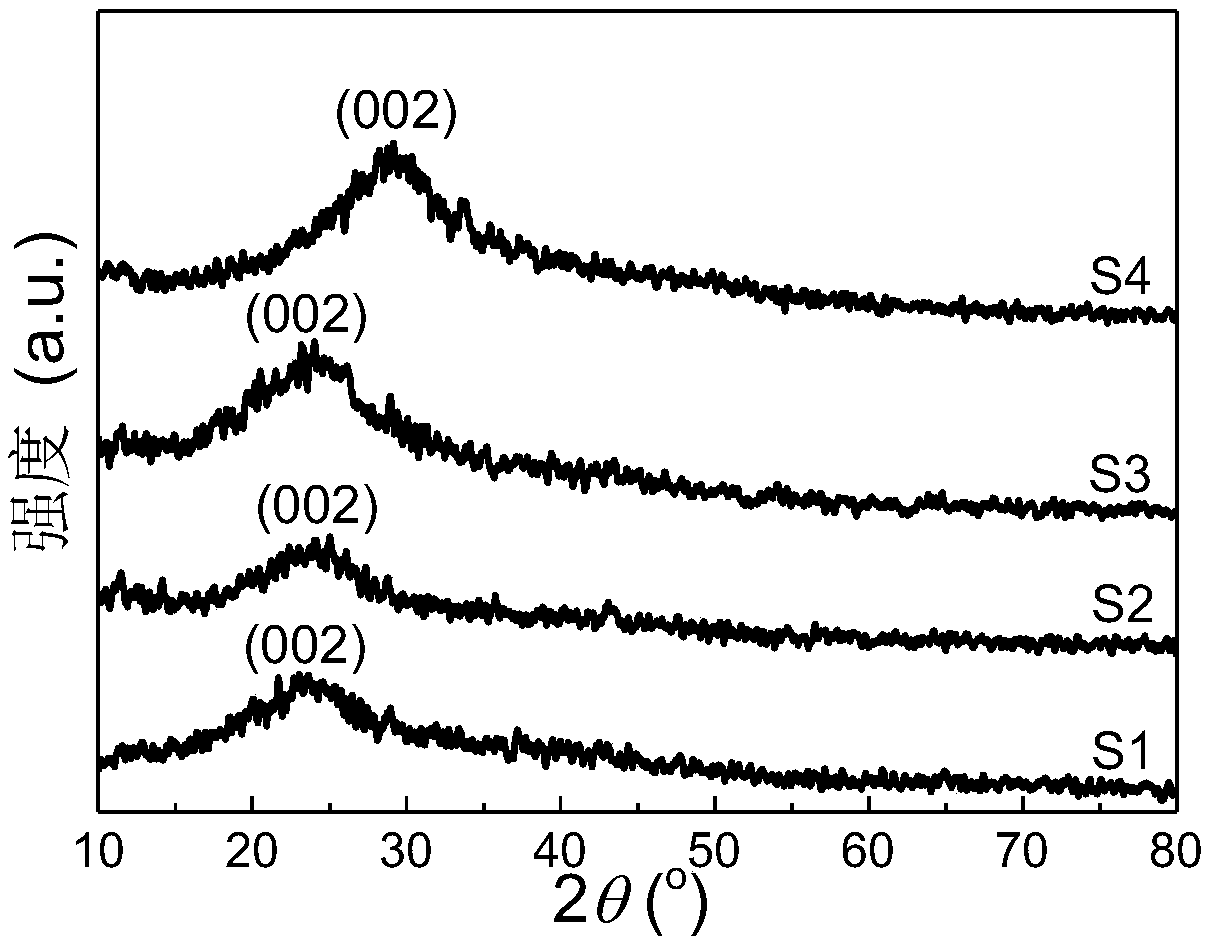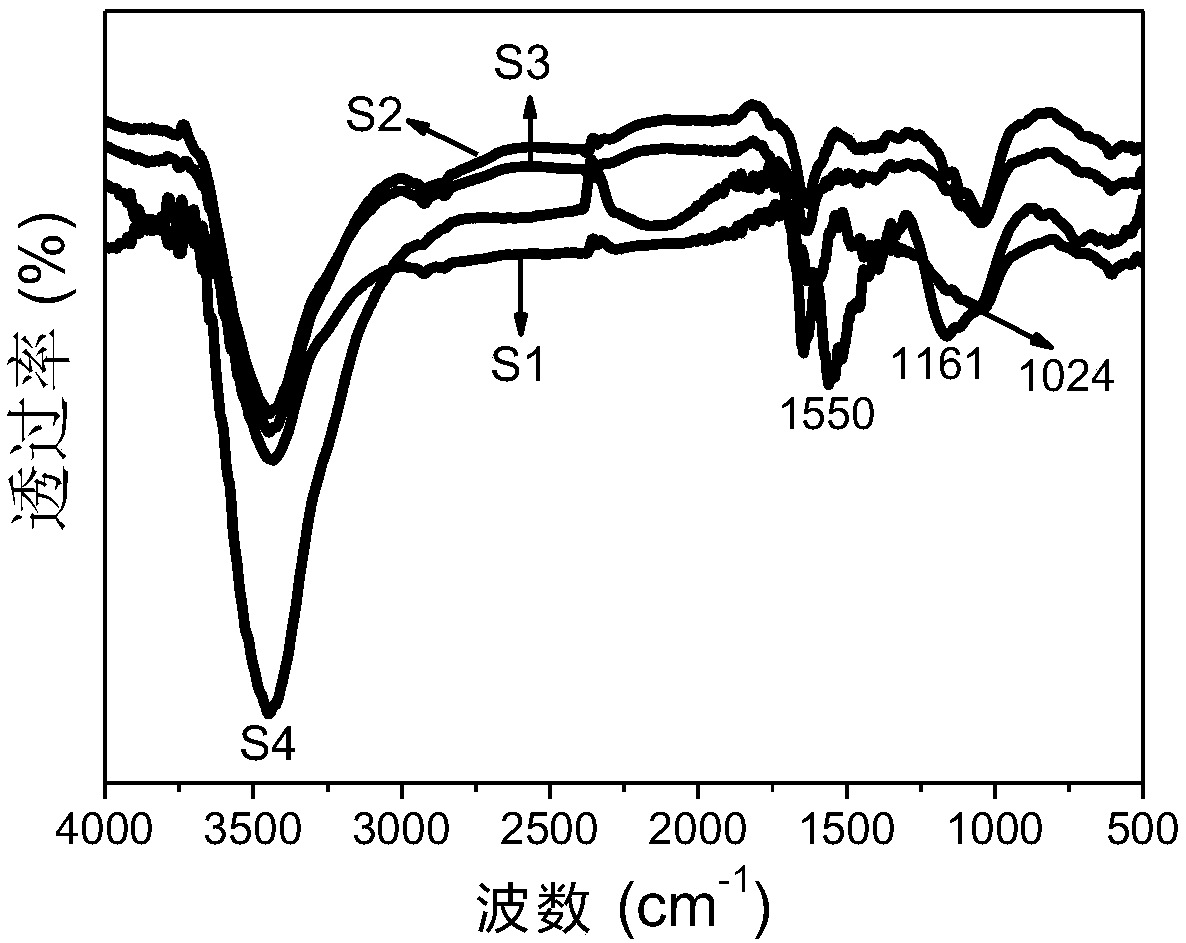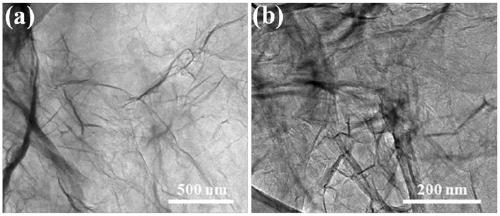Method for preparing nitrogen doped reduced graphene oxide aerogel wave-absorbing material
A graphene aerogel, graphene hydrogel technology, applied in the direction of graphene, chemical instruments and methods, inorganic chemistry, etc., can solve the problems of high filling percentage of wave absorbers and narrow absorption bandwidth, and achieve wave absorption performance Excellent, easy to operate, effective absorption and attenuation
- Summary
- Abstract
- Description
- Claims
- Application Information
AI Technical Summary
Problems solved by technology
Method used
Image
Examples
Embodiment 1
[0031] 1. Take a 100mL beaker, add 30mL of deionized water, then add 60mg of graphite oxide, sonicate for 1h, and stir vigorously for 30min to obtain a GO aqueous dispersion with a concentration of 2mg / mL.
[0032] 2. During the stirring process, slowly add EDA with a volume of 180 μL dropwise, and continue stirring for 30 minutes.
[0033] 3. Pour the reaction solution in the beaker into a 50mL reaction kettle, and conduct a hydrothermal reaction at 120°C for 12h.
[0034] 4. After the reaction, the nitrogen-doped reduced graphene oxide hydrogel was obtained, and the hydrogel was slowly added to 100 mL of 10% ethanol aqueous solution by volume, dialyzed for 24 hours, and the ethanol aqueous solution was changed every 6 hours.
[0035] 5. Pre-freeze the dialyzed hydrogel in the refrigerator for 12 hours, and then freeze-dry for 36 hours to obtain nitrogen-doped reduced graphene oxide aerogel, denoted as S1.
[0036] The XRD spectrum pattern of embodiment 1 product S1 is shown...
Embodiment 2
[0038] 1. Take a 100mL beaker, add 30mL of deionized water, then add 60mg of graphite oxide, sonicate for 1h, and stir vigorously for 30min to obtain a GO aqueous dispersion with a concentration of 2mg / mL.
[0039] 2. During the stirring process, slowly add EDA with a volume of 240 μL dropwise, and continue stirring for 30 minutes.
[0040] 3. Pour the reaction solution in the beaker into a 50mL reaction kettle, and conduct a hydrothermal reaction at 120°C for 12h.
[0041] 4. After the reaction, the nitrogen-doped reduced graphene oxide hydrogel was obtained, and the hydrogel was slowly added to 100 mL of 10% ethanol aqueous solution by volume, dialyzed for 24 hours, and the ethanol aqueous solution was changed every 6 hours.
[0042] 5. Pre-freezing the dialyzed hydrogel in the refrigerator for 12 hours, and then freeze-drying for 36 hours to obtain nitrogen-doped reduced graphene oxide aerogel, denoted as S2.
[0043] The XRD spectrum pattern of embodiment 2 product S2 see...
Embodiment 3
[0045] 1. Take a 100mL beaker, add 30mL of deionized water, then add 60mg of graphite oxide, sonicate for 1h, and stir vigorously for 30min to obtain a GO aqueous dispersion with a concentration of 2mg / mL.
[0046] 2. During the stirring process, slowly add EDA with a volume of 300 μL dropwise, and continue stirring for 30 minutes.
[0047] 3. Pour the reaction solution in the beaker into a 50mL reaction kettle, and conduct a hydrothermal reaction at 120°C for 12h.
[0048] 4. After the reaction, the nitrogen-doped reduced graphene oxide hydrogel was obtained, and the hydrogel was slowly added to 100 mL of 10% ethanol aqueous solution by volume, dialyzed for 24 hours, and the ethanol aqueous solution was changed every 6 hours.
[0049] 5. Pre-freeze the dialyzed hydrogel in the refrigerator for 12 hours, and then freeze-dry for 36 hours to obtain nitrogen-doped reduced graphene oxide airgel, which is designated as S3.
[0050] The XRD spectrum pattern of embodiment 3 product ...
PUM
| Property | Measurement | Unit |
|---|---|---|
| Outer diameter | aaaaa | aaaaa |
| The inside diameter of | aaaaa | aaaaa |
| Thickness | aaaaa | aaaaa |
Abstract
Description
Claims
Application Information
 Login to View More
Login to View More - R&D
- Intellectual Property
- Life Sciences
- Materials
- Tech Scout
- Unparalleled Data Quality
- Higher Quality Content
- 60% Fewer Hallucinations
Browse by: Latest US Patents, China's latest patents, Technical Efficacy Thesaurus, Application Domain, Technology Topic, Popular Technical Reports.
© 2025 PatSnap. All rights reserved.Legal|Privacy policy|Modern Slavery Act Transparency Statement|Sitemap|About US| Contact US: help@patsnap.com



